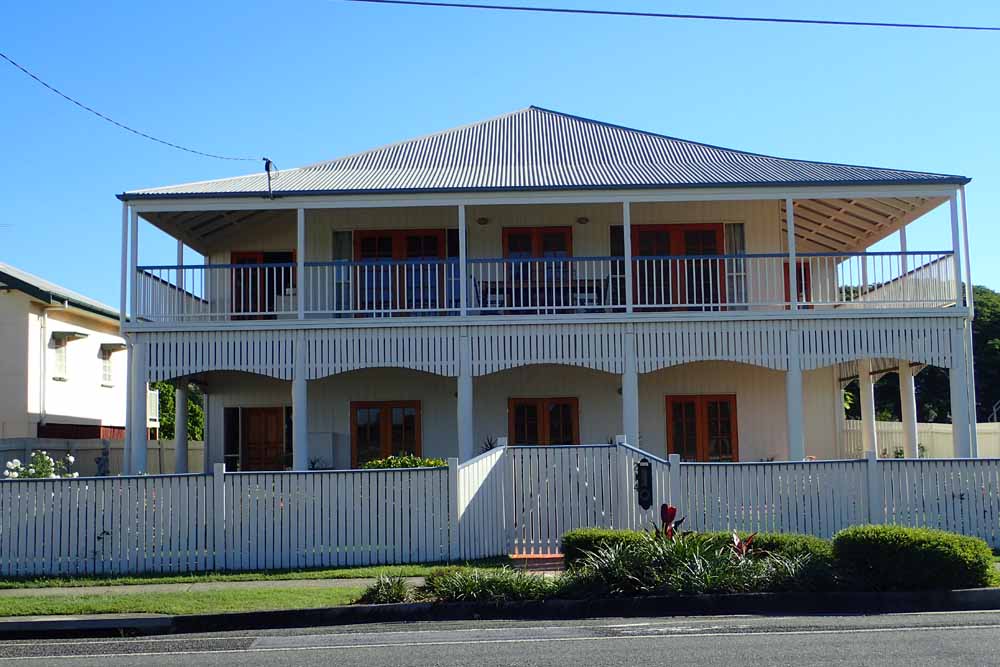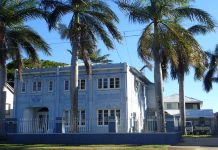Welcome to Queensland, where the stately homes sport luxurious wrap-around verandahs and solid oak floor boards. Once the humble choice for keeping cool in the Queensland heat, these Queenslander houses are now the MUST-HAVE for heritage lovers. But, should you treat yourself to a luxury Queenslander beauty? They’re not for the faint-hearted.
Why Queenslander Homes are in Demand
Queenslander houses are beautiful. The old-worldy timber construction, tongue-in-groove interior walls, simple but utterly delightful ornate detailing, thick, solid hardwood floors – so very elegant and brimming with charm. Most of all they offer those little Queensland lifestyle luxuries like a breezy white wine with a sunset view in your own vast outdoor living space. They’re delightful.
Designed for Airflow
I love to imagine Lady Bethany moving from England to Queensland in her laced bodice and many, many Victorian skirts…. and dropping in the heat. What was an aristocratic Brit to do? Built in the days before air-conditioning and energy ratings, Queenslander homes were specifically designed to create natural airflow throughout the whole house. This may include purposely gapped floor boards (yes, you can see what’s going on downstairs through your floor on some traditional Queenslanders) air vents between rooms and in hallways, big windows (or later ugly louvers) and beautiful bi-fold doors designed to stay open most of the summer. As technology advanced, Queenslanders usually included a lot of ceiling fans to increase the airflow through the home, but one thing doesn’t work in a traditional Queenslander, airconditioning.
Most Queenslander Houses are Really Old
Queenslanders were first designed and built in the 1840s. So, nearly 200 years ago. By Australian standards, that’s some very, very old architecture. Luckily indoor plumbing and electricity supply means your new home is probably good to go for the most important stuff. But, your home was around before residential electricity supply. Of course, all that beautiful timber is….expensive to maintain. It’s susceptible to rot, to termite infestations, and most of all, to age. Your new Queenslander may have been built in the 1800s – there’s going to be some maintenance required. And let’s not even talk about painting costs and challenges of a high-set timber home with fiddly wrap-around verandahs!
Cooling challenges for Modern Queenslander Owners
If you’re considering buying a Queenslander home, speak to a building and pest inspector early in the purchase process. You may need to consider upgrading the solar panels, you’re going to need them. All this airflow architecture means that air-conditioning is very inefficient. You can’t “contain” a room’s cool air without ripping out all those features that inspired you to choose a Queenslander in the first place. The large overhanging verandah is beautiful but not always suited to solar panels. Before putting in the offer on your new Queenslander, make sure that the solar panels are in good working order, and if there are none, find out why!
Roofing Challenges for Modern Queenslander Owners
Rewiring, renovating and adding insulation to your ceiling cavity may all be required to bring your Queenslander up to code and livability. Most Queenslanders were built prior to modern roof flashing being a thing. Your new Queenslander may not have insulation in the ceiling cavity. And the roof, well, traditionally Queenslanders have sheet metal roofing, not great for keeping cool in Queensland’s summer without modern protections. Make sure that your Queenslander roof is properly sealed and free from leaks and problems as you may be sending a few tradies up there to work. Your building and pest inspector will take a good hard look at the new home for termite damage and will inspect your ceiling cavity. Ask about the state of things up there. If your Queenslander has even a hint of a leak, call in a specialist plumber to do a roof inspection and quote for you. Roof leak repairs may cost more than you’d expect!
“The problem with older homes is that old school metal roofing should really have a flashing layer to protect from leaks. More modern metal roofing has a sandwiched layer of insulation, which is also prone to problems as it ages. Roof leaks are a major consideration in a pre-1920s home” said John from Salmon Plumbers Brisbane.
It could be worse, your roof MAY NOT be metal
If the roof was redone prior to 1980, you could well have yourself a bunch of asbestos to consider too. Queenslanders traditionally stood on stilts to allow airflow up through the floor, but homeowners closed them in to make beautiful high ceilinged downstairs living spaces. Guess what they used back in the day? Asbestos. The wonder-material! If in doubt, get a specialist asbestos inspection done before signing.





